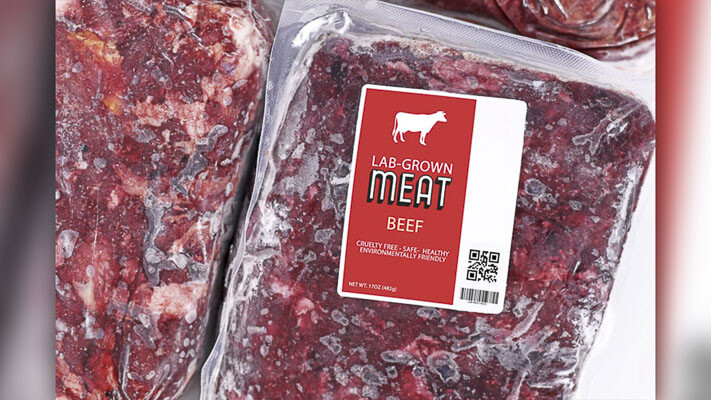
Pam Lewison of the Washington Policy Center suggests we can all pump the brakes before the cows come home when it comes to eliminating the animals involved in meat production
Pam Lewison
Washington Policy Center
When I was a teenager, I tried Boca Burgers. They weren’t the beef burgers I’d grown up with, but they weren’t awful.

Fast-forward 20 years and the meat alternative market has exploded. Even as the novelty of Beyond Meat and Impossible Meat fades, others have arrived to replace it. Specifically, Upside Foods (formerly Memphis Meats), received clearance from the FDA and USDA for marketing and sale of their products this week.
Innovation and technology are not inherently bad things. The marketing and sale of lab-grown meat in the United States is not inherently bad either. It does, however, leave a larger question for agriculture: where are farmers and ranchers in the discussion? Based on information Upside provides online, their team is made up of researchers, former Food and Drug Administration employees, and entrepreneurs, not people with first-hand experience raising the real thing.
Including people with an understanding of what Upside is trying to avoid – traditionally raised and produced meat – gives another level of insight and empathy to their process that does not currently exist. Even as food innovations move forward, there is still room for farmers and ranchers at the table.
The folks at Upside say there is a fundamental difference between what they bring to the table versus their plant-based competitors. Upside is in the business of “cultivating meat” but without the animal, while Beyond Meat and Impossible Meats produce plant-based items with the goal of emulating meat.
According to its website, Upside removes cells from living animals and “cultivates” them into the beginnings of meat by feeding the cells a liquid diet of various nutritional items including amino acids, salt, and sugar. Once the cell mass is ready for harvest it has officially become “meat.” The “meat” is molded into the shape of a chicken filet, then goes through the rest of production like any other chicken product you’d find in the refrigerated or frozen sections of the grocery store.
Beyond Meat, on the other hand, is a vegan meat alternative that uses peas, beans, coconut oil, potatoes, and other ingredients to trick the eater into experiencing a meat-like taste and texture. These ingredients are shaped into a patty, made into a “crumble,” or put into a vegan casing to make a “sausage.”
Impossible Meat is a soy-based alternative meat with one key ingredient its competitors don’t offer: heme. Sourced from beets, Impossible Meat includes heme to give its alternative meats the appearance of “juicy” meat akin to real meat juices on a plate.
The goals of each company are different, too.
Upside claims its goal is to provide “real meat” without the carbon footprint of animal agriculture. Because Upside is not yet on the market, the full carbon footprint of production and shipping is not yet known. Beyond Meat claims its mission is to shift from animal to plant-based meat so “we can positively affect the planet, the environment, the climate, and even ourselves.” Impossible goes a step further, stating “adjusting your diet can be better than getting solar panels, driving an electric car, or avoiding plastic straws,” for the environment. A report from the New York Times calls into question whether Beyond and Impossible are really as good for the environment as the companies claim.
With Upside having a soft entry into the market – the company says it will have its products on offer in restaurants to start – the real question is about the appetite for meat “grown” in a lab.
On a cellular level, what Upside creates is, in fact, meat. But it is being created, not raised. By eliminating animals from the meat production process, consumers are entering into new territory.
When geneticists reported the successful cloning of “Dolly” the sheep, the world was in an uproar about what advances in cloning might mean for better and worse. Ultimately, the cloning of a sheep highlighted flaws in the process, specifically that some of Dolly’s DNA and cells showed the “age” of their “source material.” It also opened a series of ethical debates about how far was too far when it came to cloning and whether the benefits outweighed the detriments.
As the market embarks on opening the door to lab-grown meat, similar questions should be addressed. Are consumers empowered to draw a line in the sand between “analog” (aka livestock-based) meat and “cultured” (aka lab-grown) meat? What does the line look like?
Consumers continue to find empowerment in the food sphere through labeling initiatives, pushes for non-GMO foods, organic growing practices, and more, in the name of animal justice and saving the environment. However, eliminating the application of certain pesticides or asking for heritage produce varieties is a far cry from “growing” meat in a lab. These activities are not just at odds with one another on the surface, they are at odds with one another on a deep level.
Demanding produce grown with minimal inputs is diametrically opposed to harvesting cells in a lab for meat. When focusing on “natural” activities, it is easy to point to produce and demand changes that eliminate synthetic pesticides or seeds improved through breeding. When looking to a clinical environment to scoop a meat-like substance from a growth medium into a mold, there is little “nature” involved. Perhaps, we can all pump the brakes before the cows come home when it comes to eliminating the animals involved in meat production.
Pam Lewison is the director of the Center for Agriculture at the Washington Policy Center.
Also read:
- Letter: ‘There will be consequences’Hazel Dell resident Bob Zak criticizes Democratic lawmakers for advancing ESSB 5181, arguing it undermines parental rights and defies biblical principles.
- Op-Ed: La Center Schools — Committed to families and their childrenIn a public letter, the La Center School Board and Superintendent Peter Rosenkranz affirm their commitment to supporting families and honoring both state law and community values amid state-level scrutiny.
- Letter: Mayor blames others on homelessness problem in Vancouver while she has enabled a lawless encampment zoneVancouver resident Peter Bracchi urges city leaders to enforce laws and end permissive policies that have allowed unsafe encampments to overrun public spaces near the Share House.
- Letter: ‘Look it up for yourself’Camas resident Anna Miller encourages skeptics of Elon Musk’s claims about government waste to do their own research using official resources.
- Opinion: Defending the indefensibleNancy Churchill argues that Washington’s lawsuit against a sheriff cooperating with ICE reveals a deeper political agenda that puts public safety at risk.










